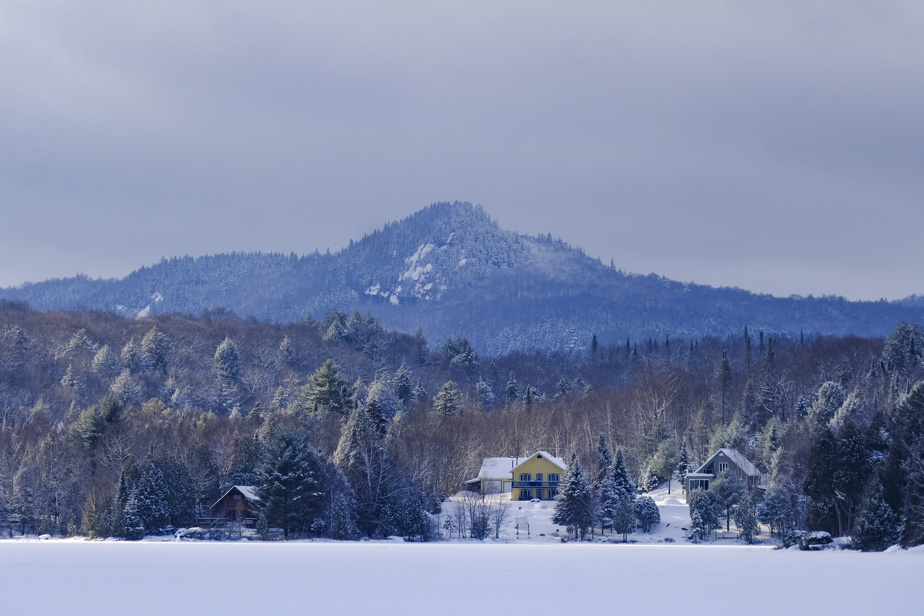The ecological analyzes carried out in connection with the construction project for a road crossing the Mont-Tremblant National Park to connect the Laurentians and Lanaudière regions will remain secret.
The Society of Outdoor Establishments of Quebec (SEPAQ) refused to send these documents to The Presswho had claimed them under the Act on access to documents held by public bodies and on the protection of personal information.
“SEPAQ has documents responding to your request, [mais] we cannot send them to you, as permitted by sections 22, 37, 38, and 39 of the Act”, writes the head of access to documents for the Crown corporation in her response to The Press.
The articles of the Law invoked by SEPAQ rather indicate that a public body “may refuse to communicate” an opinion, analysis or recommendation that is less than ten years old or that was produced as part of an ongoing decision-making process, or industrial, financial, commercial, scientific or technical information “the disclosure of which could reasonably be expected to hinder negotiations with a view to concluding a contract”.
The documents held by SEPAQ are a characterization report dated April 2022, two ecological supplements dated April and June 2022 and a “complementary ecological and aquatic characterization study” dated February 2023.
The first three documents were produced by the Biodiversité Conseil firm of biologist Kim Marineau, lecturer at the University of Sherbrooke, while the fourth comes from Groupe Synergis, born of a merger of the firm BC2, Groupe Conseil Nutshimit-Nippour and the DESFOR Group.
public interest
The public interest of these documents is undeniable, in the eyes of biologist Alain Branchaud, director general of the Quebec section of the Society for Nature and Parks (SNAP).
In a context of crisis of confidence about the value of opinions from external firms that are commissioned by project promoters, and in this case SEPAQ is the promoter, it is relevant to make these documents public, because we could see the quality of the analyzes that are done.
Alain Branchaud, General Manager of the Quebec section of the Society for Nature and Parks (SNAP)
Among the information likely to be found in these analyzes are the species listed, in particular those which are in a precarious situation, the risks associated with the disturbance of their habitat or the impact on the integrity of the park, lists Mr. Branchaud.
“If the studies are well done, maybe transmitter collars were used [chez certaines espèces comme le loup] to see how many times they cross the road,” to analyze collision potential, he adds.
These documents can certainly contain delicate information, such as the precise location of certain precarious species, but these details could be redacted without the whole document being hidden from the public, nuance Alain Branchaud.
“From a conservation perspective, I think most of these documents should be made public,” he says.
through road
The SEPAQ project consists of widening and asphalting over about 30 kilometers of Route 3, which is currently a gravel road closed in winter, to allow traffic to be driven at 50 km/h all year round.

This “scenic route”, equipped with a cycle lane and rest stops, would create a transit link between the municipalities of Saint-Donat and Saint-Michel-des-Saints, which motorists could use without having to pay the toll fee. access to the park, if they only cross it, projects SEPAQ.
However, the project has not been the subject of an environmental assessment, reported The Press February 27.
SEPAQ had initially affirmed that the completion of a “global impact study of the project” was not required, before indicating that it would be necessary to wait for the completion of the plans and specifications to determine whether such a study should be conducted.
There Parks Act affirms that the “priority” objective of a national park is to “ensure the conservation and permanent protection” of a territory.
SEPAQ has the dual mandate of managing conservation activities and outdoor, hospitality and accommodation activities in national parks south of 50e parallel.
Learn more
-
- 1510km2
- Area of Mont-Tremblant National Park
SOURCE: SOCIETY OF OUTDOOR ESTABLISHMENTS OF QUEBEC (SEPAQ)
